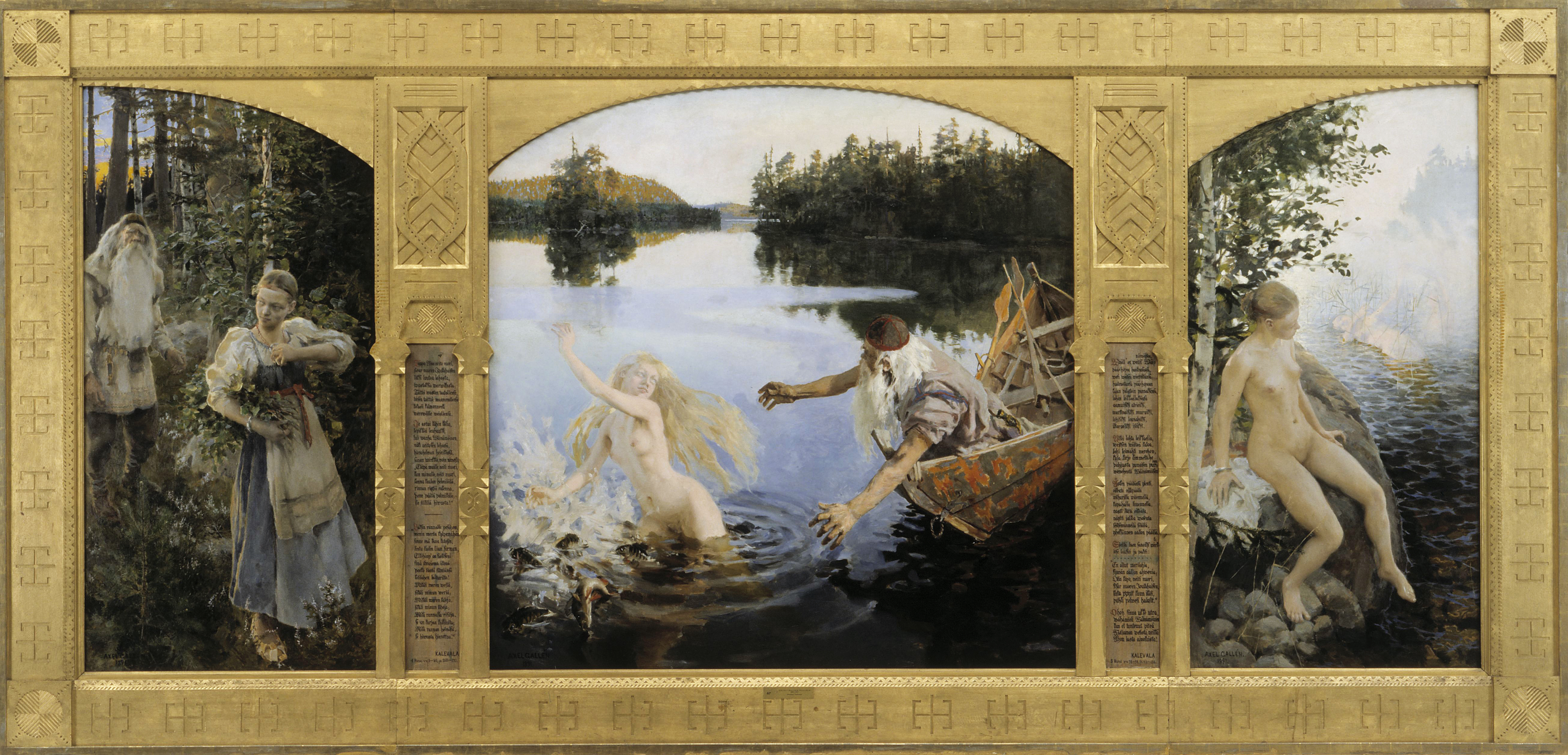Finnish mythology, culture, and their language in general is fascinating to me because it’s so profoundly unique. The language is especially intriguing because there’s nothing like it anywhere else on Earth. Finnish is a Uralic language and is completely different from the other more common Romance languages we typically hear about. Just to hear it spoken or sung makes my heart happy - it’s a magical language I imagine the elves from ‘Lord of the Rings’ would speak.
The Kalevala is very large - composed of 50 songs (Finnish: Runo), all sung in their own unique metre known as the Kalevala metre. Most epic poems are simply that - poems. The Kalevala, however, is one giant song. How cool is that?
The portion we’re given to read includes the song-battle of Joukahainen and Väinämöinen, Väinämöinen’s pursuit of Joukahainen’s sister Aino, Aino’s suicide, Väinämöinen’s fishing, Joukahainen’s revenge, Väinämöinen’s wooing of the maiden of Pohjola, and the creation of the legendary Sampo.
The epic starts off with haughty Joukahainen wishing to challenge the great song-sorcerer Väinämöinen to a singing contest, to pit each other’s wisdom against each other (as much wisdom was carried in the form of songs). His mother warns him to not go up against such a great sorcerer, but Joukahainen ignores her and goes to challenge the old man still.
Väinämöinen asks him many questions and Joukahainen answers, until he falsely states that he was there at the time of creation. Väinämöinen, knowing this is a lie, punishes the youth by singing all he has brought with him into useless dirt. Then, to drive his point home, he sings the lad into a mud hole. As the mud is closing over Joukahainen, nearly drowning him, he begs Väinämöinen to free him, promising his sister in return for his life.
To me, Joukahainen is a coward in this respect. He thought himself wiser than he was, and his pompous actions endangered not only him, but also his sister. He selfishly offered up his sister to repent for his own foolishness, and this will cost Aino her life (kinda).
Väinämöinen is obviously stoked by this. Aino, Joukahainen’s sister, is certainly not. Upon hearing she’ll be wedded to an old man, she sinks into a deep depression. Honestly, I would too if I got roped into an arranged marriage I wanted nothing to do with. Her mother tells her to stop crying because Väinämöinen is a great and powerful wizard and will keep her home warm and larders full, but Aino is having none of it. In her anguish, she allows herself to be taken by the lake and drowns in the abyss.
Her mother, brother, and Väinämöinen grieve tremendously for her passing. Väinämöinen actually catches her as a fish one day while out on the lake, but she wriggles out of his grasp and mocks him. Fruitlessly, he tries to recapture the Aino-fish by dredging all the lakes, streams, and rivers of the land. After giving up, his mother comes back from the dead and tells him to seek out the maiden of Pohjola as a wife. What are these regions? Where exactly is Kaleva, Pohjola, and several other regions mentioned in this national epic?

Väinämöinen's fishing
Image: Wikipedia
On his way to Pohja, Väinämöinen is shot out of vengeance by Joukahainen and immerses himself in the Ocean. There, he is tossed about and beaten up by waves for many days and nights. When he finally washes up on shore in Pohja, he’s so weary and heartbroken that all he wants to do is go back home. The old woman of Pohja promises to send him back and give him her daughter if he can forge her a Sampo. Väinämöinen answers honestly that he can’t, but he can send someone who can, Ilmarinen, the great smith. Also, what’s with everyone using their children as bartering goods or currency? Your child’s opinion matters too!
And from what is said about the land of Pohja between Väinämöinen and Ilmarinen, it’s not a great place. People eat each other, it’s dark, and really cold. What a place to live.
Ilmarinen arrives in Pohjola and says he can and will forge a Sampo. It’s described as an object with a ‘many colored cover’ and is made of impossible things, much like the chains which hold down the wolf Fenrir in Norse mythology.
Ilmarinen eventually forges the complex Sampo, and it churns out milled grain for the inhabitants of Pohja. But he does not take the maid of Pohja as his prize. Like a gentleman, he actually asks for her hand, but she refuses. Even though he’s deeply saddened by this, he accepts her decision and goes back home to Kaleva, to do his smithing and talk with Väinämöinen.
Want to hear some of the original songs of the Kalevala? Click on the link below!
Songs of the Kalevala
No comments:
Post a Comment